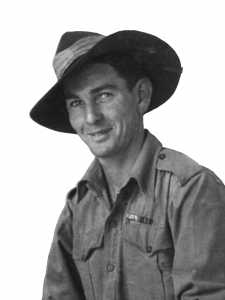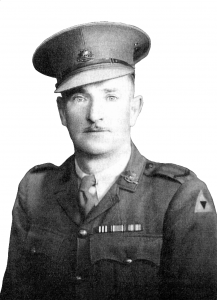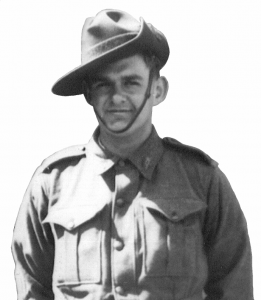TWO CAME HOME – THE FIRING SQUADS
Death of Millhouse, Ockerby, Brown, Raphael & Thompson from 2/4th MGB
There were 7 members of the 2/4th who were taken by the Japanese Imperial Army for execution. In all cases there does not seem to be any apparent motive except the fact that they were machine gunners. Considering the punishment dealt out by the 2/4th during the Battle of Singapore this was probably reason enough for the Japanese to take vendettas out on the men.
The following is from Captain Avon Smith-Ryan’s diary for 15 February 1942.
‘We were ordered to join the rest of the battalion at the Chinese Cemetery off Holland Road at 1800 hours. I found the rest of ‘B’ Company there as well as Major Green, Anderson, Thomas, Raphael, Thompson and later Tom Bunning. About midday on the 16th we fell in and walked to the Raffles College Padang remaining there for 2 days. Thompson, Raphael and one other were whisked away on a truck and haven’t been seen since. RSM Airey was also taken.’
Major Green’s report states:
‘Captain Thompson, Lieutenant Raphael and Private Brown were with the unit at Buona Vista on 15th February 1942, the date of the capitulation of Singapore. On the 16th a portion of the unit was moved to Holland Village and thence to Raffles College Square. During the afternoon of the 16th whilst we were concentrated at Raffles Square a Japanese soldier entered the square and ordered Captain Thompson, Lieutenant Raphael and Private Brown (who were standing at the end of a column) to accompany him. They were marched to the roadside where they were placed on a truck’.
It is believed that these men were questioned on the Monday, Tuesday, and Wednesday and on Thursday 19th February, at 1715 hours were executed with their hands tied behind their backs.
Below Left: Capt Thompson. Right: Lt.Raphael
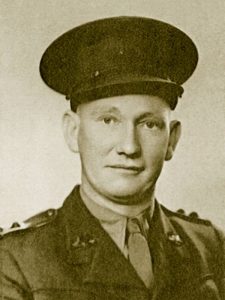
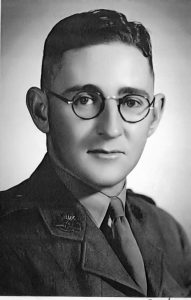
Private James Brown WX17754 died aged 29 years
The other 4 battalion members were in a second firing squad but not all collected from the same location. The first 2 men were Privates Les McCann and Rupert Millhouse. The ambush at South-West Bukit Timah on Wednesday 11th February, Les McCann was wounded in the right leg by mortar fire and took refuge in one of the native huts at the opposite side of the clearing. On the 13th February he was joined by Rupert Millhouse who had received 4 machine gun bullets to the right leg.
The next day the two men decided to move out towards the West Coast Road. That evening they received medical attention at the Mohammedan’s Institute where on 15th February they were informed that all British forces had surrendered to the Japanese. On the morning of 16th February McCann and Millhouse moved out again along West Coast Road where they met 3 other Australians near Pasir Panang Village. At the entrance of a house the 5 men were stopped by the Japanese sentries and ushered inside. They were then locked in a room fitted with barred windows. At about 1800 hours that evening they were taken outside and put on a truck. At the gate they met another Japanese who was escorting more Australians including R.S. Fred Airey and Private Harold Ockerby; the remainder were all members of 2/28th Battalion. R.S.M. Airey had been conscripted to drive trucks for the Japanese for the purpose of collecting Japanese bodies to be taken to the crematorium.
Below: Ockerby and Millhouse who both died.
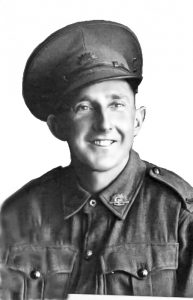
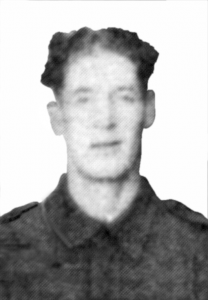
It was here the R.S.M. Airey met up with Harold Ockerby, the former driver to Lt-Col Anketell. During the time on the truck the Japanese tried several times to relieve the R.S.M. of his haversack but he obstinately refused to hand it over to his captors. Unbeknown to the Japanese it contained the Battalion Headquarters battle diary. After driving for some time it appeared the driver was unable to find his destination and returned to the starting point at the house. R.S.M. Airey was later questioned and told the Japanese officer they were all machine gunners. At this point some of the men spoke out saying they were in fact drivers from the 2/18th. McCann notes that from dawn on 18th February the Japanese appeared decidedly unfriendly. At 1730 hours the entire group of fifteen men were taken one by one and their hands tied behind their backs.
This group of unfortunates who had probably done northing more than be in the wrong place at the wrong time were then marched down the road in single file to the jeers of Japanese soldiers lining the road. Turning north onto Reformatory Road, the group were marched a further 400 yards then halted and lined up with their backs parallel to a small stream. The location as later identified by McCann is thought to have been at map reference 753097. Seven Japanese soldiers then appeared on the scene and lined up in file about 10 yards in front of them. The men were ordered to about face and the sound of rifle bolts being worked was heard from behind. McCann recalls telling himself that the situation was not looking too good. Suddenly there was the all too familiar crack of rifles being discharged. McCann was knocked unconscious, the force of the bullet entering his rib cage and tilted him over the edge of the steep bank on which he was standing.
A temporary lapse in proceedings indicated that all the men had either fallen into the creek or on the bank above. The Japanese firing squad then advanced several paces and fired a second volley into the limp bodies until they were satisfied that all sign of life had expired. McCann remained still for what he believed was five minutes and then hearing no sound freed himself of his bindings, struggled to his feet and moved off along the stream. R.S.M. Airey on the other hand hearing the crack of rifles discharging forcibly, threw himself into the stream at this stage he was unharmed. When the Japanese fired the second volley he was grazed on the forehead and with blood running over his face, gave the impression that he had received a fatal wound.
On hearing the Japanese voices fade into the distance and after what R.S.M. Airey thought was a safe period of time, he opened his eyes and looked around. Checking all the bodies he believed that everyone had been executed and made good his escape. If R.S.M. Airey is correct then it is feasible that McCann may have been unconscious for longer than he thought. After having gone a short distance McCann lost consciousness until just before sunrise the following day.
At this stage McCann did not know the extent of his wounds only that his shirt was soaked in blood and that he was in pain. The bullet in fact had entered his back under the shoulder blade between the 4th and 5th ribs and exited at the 5th rib. There was no damage to the heart, however his left lung had collapsed. McCann redressed his leg wound but was unable to do anything about his chest wound. He then moved back to the location of the massacre and discovered the Japanese had felled a rubber tree in a halfhearted attempt to conceal the bodies and the war crime. Making his way to a hut he remained there for 2 days until he felt sufficiently strong enough to continue.
Times and dates now meld into one over the nest week as McCann gradually made his way ever closer to Singapore City. Eventually finding himself at Singapore General Hospital, he was treated by the Japanese and eventually released to Changi Gaol, which at this time was being used as a civilian internment camp. Les McCann rejoined the 2/4th at Selarang Barracks Changi on 14th October 1942. He had survived his ordeal but Rupert Millhouse had not been so lucky. R.S.M. Airey thought Pte. Millhouse gallant to the last as he let his executioners know exactly what he thought of them with his last breath of life. R.S.M. Airey managed to escape Singapore firstly to Sumatra then south to Java where suffering the effects of starvation he was handed over by the local people to the Japanese at Samarang. It was here that he would meet up with other Australians and finished up in Thailand on the Burma-Thailand railway with ‘D’ Force in the Hintok Area.
The following is taken from Airey’s statement to United Nations War Crimes Commission.
“I could not tell the men of the Japanese intentions. I next went out refusing to be tied, I was handled roughly being struck both before and after my hands were tied. I asked as best I could for an officer. The wounded men, McCann and Millhouse were not tied to the best of my belief. We were then told to march, proceeding under the eyes of about 1000 Japanese soldiers, up Reformatory Road. The men were quite unconcerned; in fact they thought it funny.
The Japanese in charge of the party appeared to me to be an officer or a warrant officer he was about 5 foot feet 6 inches tall, well built, about 24 years old. He was fair and good-looking for a Japanese
Turning off the road into light growth we proceed south. Looking around I discovered that McCann and Millhouse were distressed. Breaking ranks I went back to McCann, who was being forced along with a bayonet in his rear. I sent McCann forward, the Japanese soldiers who had forced him along staying and threatening me. Millhouse was practically exhausted when he reached me having been forced to walk fast with a bullet wounds to his knee, the Japanese bayonets drawing blood every time he slackened his pace. I went with Millhouse and we joined the party, taking up my former position.
Proceeding a further distance along the bank of a small stream we were told to form a single file. The Japanese in charge halted and pointed across the stream, calling an order the men immediately turned right to see how to cross the stream, when the first volley was fired. I saw two men falling forward into the stream, others crumpling up where they stood. A bullet whiz past my head (it had been impossible to form any plan to escape and up to this very second I had no idea that there was a chance in a million), I somersaulted into the bed of the stream and lay still. Millhouse couldn’t do anything and the Japanese in their usual cruel way left him to the last. In the meantime he told the Japanese in no uncertain terms just what he thought. I consider this extremely gallant.
After dropping everyone the Japanese proceeded to make certain by giving us all an extra round. I heard the strike of the bullet into the body next to me and awaited mine. When it came the bullet grazed my forehead, taking skin only and covering my face with gravel, water and blood. I remained in this position until I heard the voices of the Japanese fading away. After sometime had elapsed I opened my eyes and cautiously looked around to make certain that the Japanese had gone. Sitting up I then cut my hands free with a razor blade which I had been able to extract from my haversack and then went around to possibly eight of the bodies that were screened from Japanese sight to ascertain if they were dead or had miraculously escaped as I had. They were all dead; the bodies that were lying above on the bank I called to them and getting no reply, I assumed that they were also dead also. I then attempted my escape.
Returning to Singapore from Java in 1943 I discovered that McCann was alive.”
Fred Airey and Les McCann would both survive their execution and Prisoner of War experience for they were the two who came home.
Below: Left Les McCann and Right is Fred Airey.
